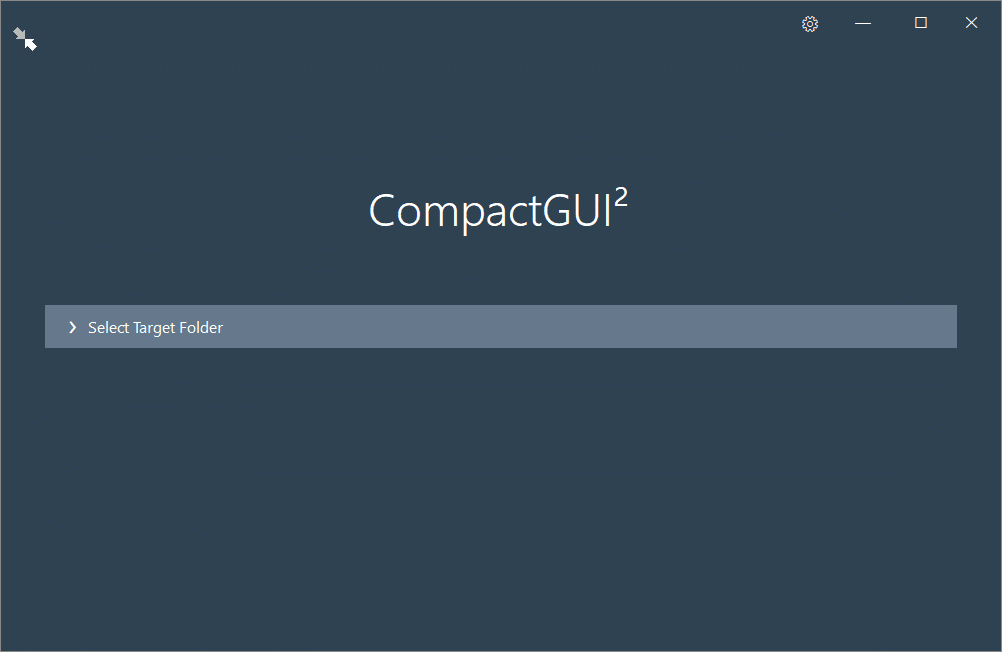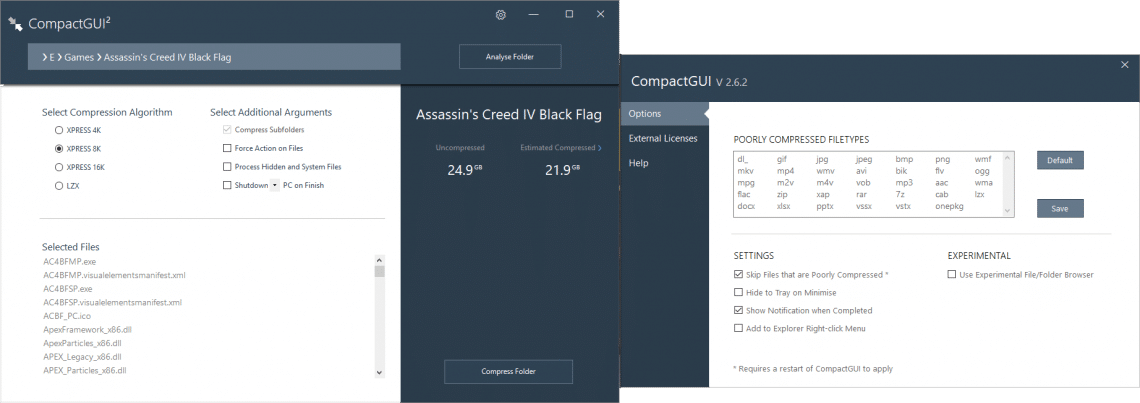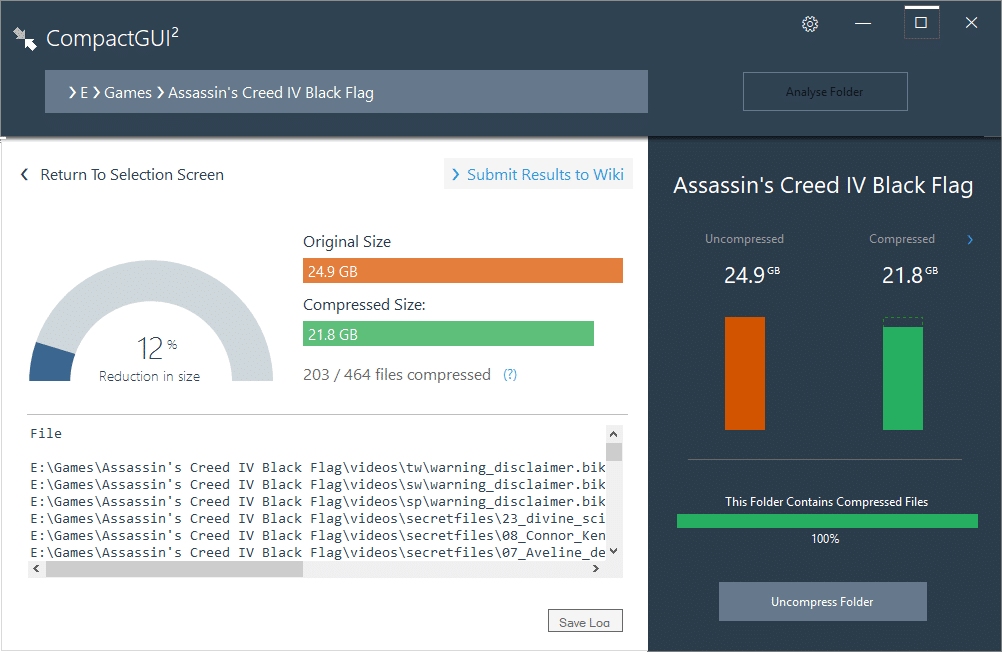Windows 10 features an inbuilt compression feature that compresses the drive on which Windows is installed to free up disk space. This inbuilt mechanism only works for a drive and compresses the size of the OS installation. Most of the time, you’d probably be more concerned about the size of some of your folders that are growing too big. Maybe you have a game such as GTA V installed. Games tend to take up a lot of space, especially AAA titles like GTA. You may have thought about archiving such folders to make space, but then they don’t remain as usable. You wouldn’t want to compress and decompress files whenever you want to use them. Not to mention this doesn’t save a lot of space either.
But this is where CompactGUI comes into the picture. It’s a compression tool that works similarly to the compression used by Windows. This means it will not archive your files and folders and they’ll still be as accessible and usable as before. The only difference would be that they use less space. Moreover, CompactGUI lets you compress individual folders, unlike the inbuilt Windows 10 compression. The size difference after compression is significant enough that you would want to compress more folders.
Remember, you won’t get significant results when compressing folders with mostly JPEG, AVI, MP3, or similar file types. These files are already quite compressed. Therefore, this tool does not act upon these files. You can get the best results with folders of installed programs or games. Here’s a short list of all the file types that CompactGUI does not act upon by default: GIF, JPG, JPEG, BMP, PNG, MKV, MP4, WMV, AVI, BIK, OGG, FLV, MPG, M2V, M4V, VOB, MP3, AAC, WMA, FLAC, ZIP, RAR, 7Z, CAB and LZX.
CompactGUI tool offers four compression algorithms: XPRESS4K, XPRESS8K, XPRESS16K, and LZX. Out of these, XPRESS8K or XPRESS16K generally provide the better results.
How to compress folders with CompactGUI
- CompactGUI is a portable tool, that is, it does not need any installation. Run it by simply double-clicking the downloaded exe file.
- Click Select Target Folder and select the target folder, i.e. the folder you want to compress.

- Now you will be asked to select a compression algorithm. As mentioned, XPRESS8K or XPRESS16K should provide the best results but you can experiment and try any compression methods. What’s more important here is to make sure that the Compress Subfolders option is checked. By default, CompactGUI leaves system files and hidden files as they are. If you prefer, you can select Action on Hidden and System Files to make it compress these files as well. This isn’t generally harmful, but if they’re not taking up a lot of space it would be preferable to leave them out.
- To make it compress GIF, MP3, and other file types mentioned above, click the gear icon and uncheck Skip files that are highly compressed.

- When ready, click the Compress Folder button in the bottom right. Depending on the selected compression algorithm, your PC’s configuration, and the size of the folder, this may or may not take a while. The compression process can last from a few minutes to a few hours.
Uncompress Folders
Once compression is complete, it will show you the previous and the new size, at which point you might want to close the tool but don’t. Open the folder and your files and make sure everything works as expected. You may also want to check the size of the folder, to make sure it has been compressed. If things go as planned you can close CompactGUI, but if something’s not working, you can click the Uncompress Folder button to revert it to its previous state.
Just to be extra careful, you might want to create a backup, of the folder you’re compressing, elsewhere. This way, you can be sure that things can always be restored. I’ve never needed a backup yet, but who knows when I might.
